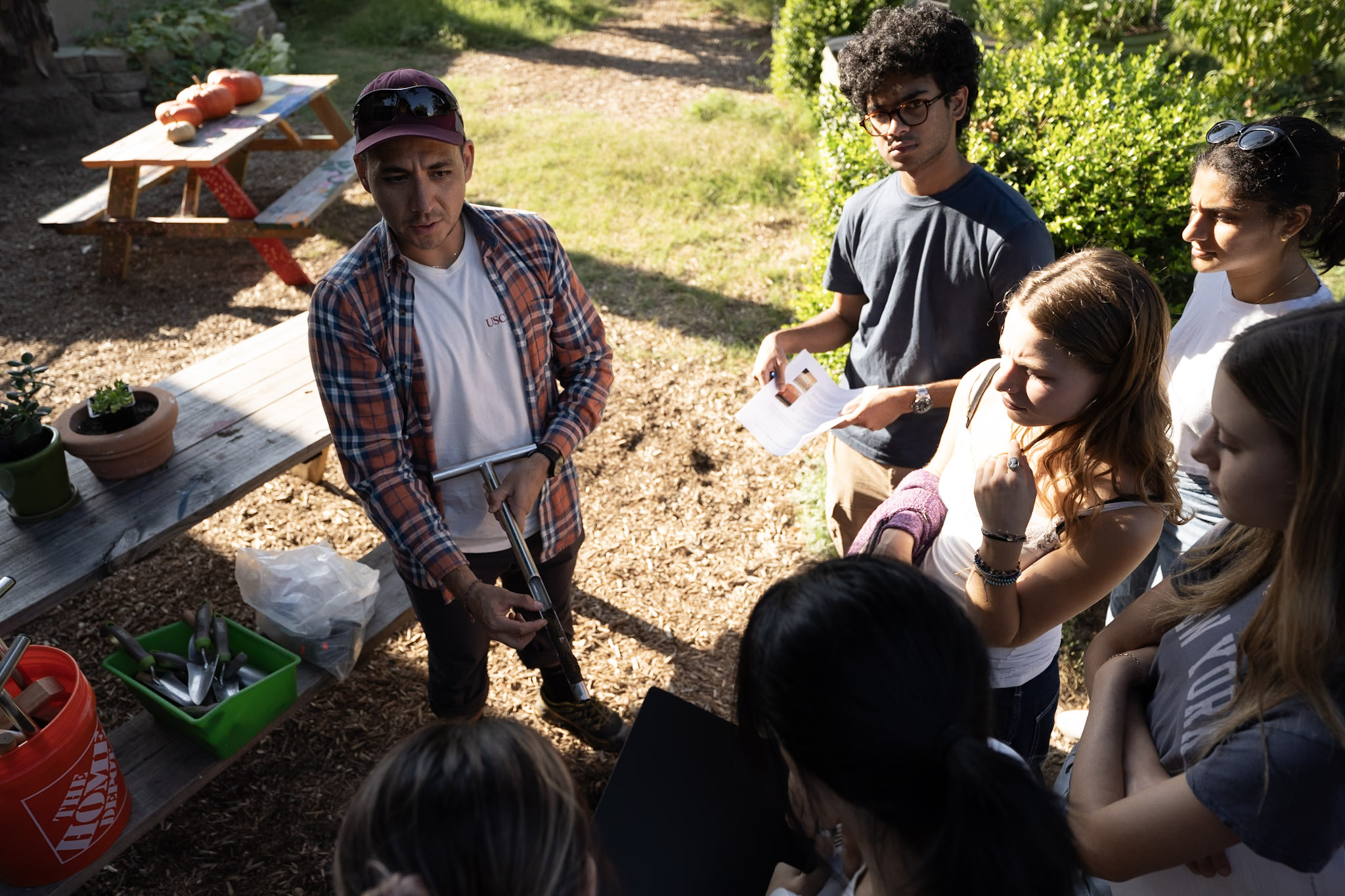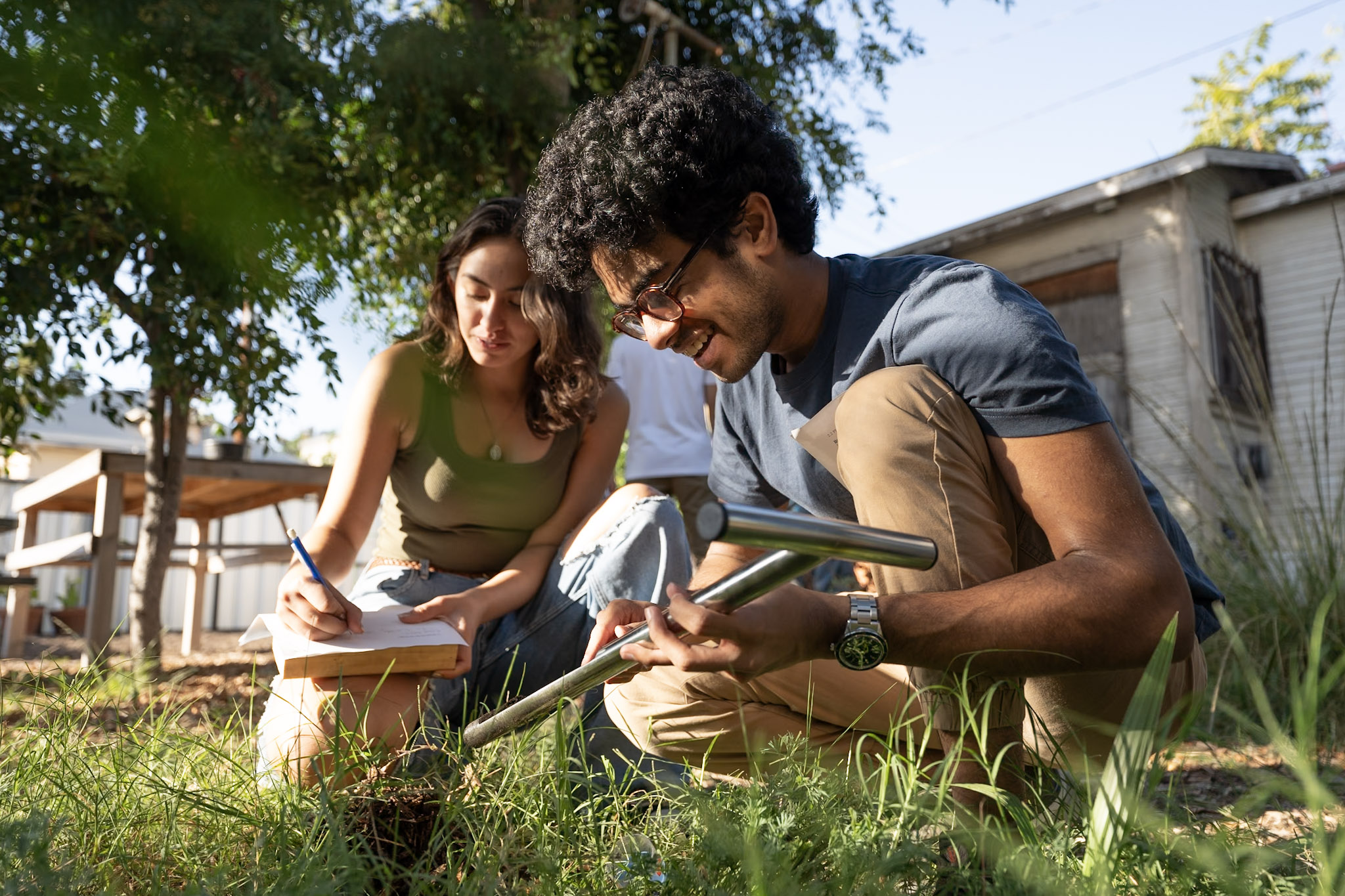USC Environmental Studies Course Spotlight – ENST 320a: Water and Soil Sustainability
Both soil and water are essential components of human livelihood; they’re important for food production and security, they provide critical ecosystem services, and much more. ENST 320a, a core course in the USC Environmental Studies Program, gives students the opportunity to learn about issues related to soil and water sustainability through hands-on activities in the laboratory and in the field.
Previously, the course offered these field activities at the Wrigley Marine Science Center, USC Wrigley Institute’s satellite campus on Santa Catalina Island. When hydrologist Andres Sanchez joined the USC Environmental Studies Program’s faculty team as a lecturer, however, he refined the course to provide enhanced learning opportunities to students without having to journey far from USC’s University Park Campus (UPC). USC Dornsife College of Letters, Arts and Sciences supported the expansion by completely renovating a lab for the course at UPC.

For one of the course’s hand-on learning activities about soil sustainability during the fall 2023 semester, Sanchez and his students took a field trip to the USC Peace Garden, a project initiated by the Chan Division of Occupational Science and Occupational Therapy. Its goal is to transform a dilapidated lot owned by USC into a community garden space that offers education, research, and programming related to themes in environmental sustainability, health and wellness, and social and environmental justice.


Students collected soil from areas with native and non-native vegetation, as well as from areas with different tree types found in the garden. “The goal was for students to identify differences in soil samples. For example, they were able to see soil with high organic matter content.” Sanchez said. “Organic matter soil has water stored in it because organic matter retains a lot of moisture. Students saw that soil collected from a palm tree or a pine tree tends to be more dry and has less organic matter.”
Upon collecting soil samples, students examined the arrangement of distinct layers of soil, referred to as the soil profile. They noted how many horizons they saw and their varying characteristics, such as difference in colors due to the presence of organic matter or certain minerals. Back in the laboratory on campus, students further examined their samples’ physical properties.
“My approach for the course is to get students involved in the whole process of environmental science,” said Sanchez. “Students learn how to prepare for sampling and what to look for, how to go into the field to collect water and soil samples, how to process those samples in the lab, then interpret their data.”
ENST 320a is offered in the spring and fall semesters, as well as during the USC Wrigley Institute’s Catalina Residential College Julymester. The course satisfies core requirements for environmental studies majors and minors.


